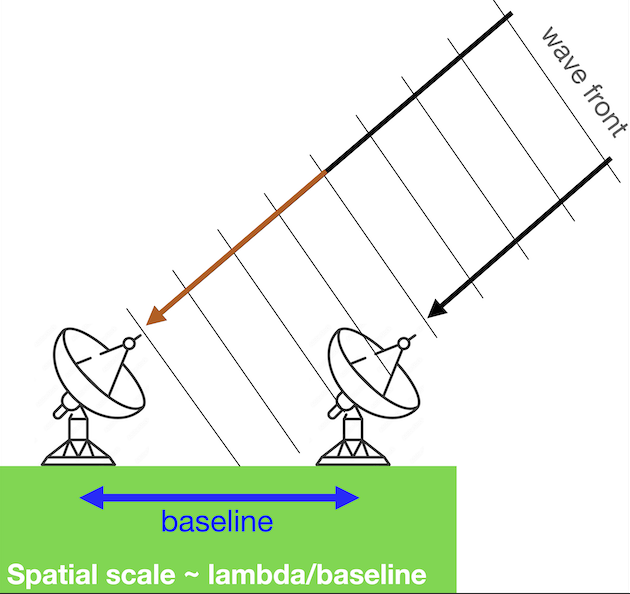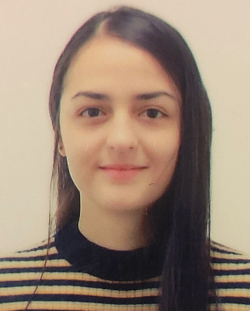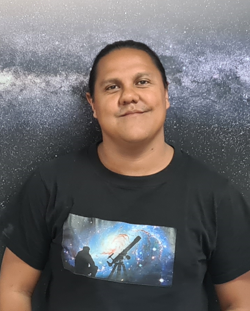Research
How, when, and where planet formation starts?
During my research career, I have focused on studying the physical processes occurring in protoplanetary disks from both theoretical and observational perspectives to understand how dust grains grow from micrometre to kilometre scales, ultimately forming the solid cores of planets like Earth. I am particularly interested in disks with vortices and/or ring structures, where dust grains can be trapped and grow. My research has primarily focused on analysing continuum dust emission at millimetre wavelengths while accounting for the effects of scattering by spherical dust grains. Through these analyses, I have been able to determine the dust surface density (mass), temperature, and grain sizes from multi-wavelength observations of dozens of protoplanetary disks, and employ analytical models and dust evolution simulations to explore the origins of the observed structures.
I have placed special emphasis on analysing disks in the visibility plane, as this is essential to take full advantage of the observations obtained with radio interferometers such as ALMA and the VLA. Additionally, I am fascinated by the study of gas observations in protoplanetary disks, as they provide insights into disk dynamics and offer the opportunity to detect forming planets through their gravitational interactions with the surrounding material.
Check my full list of publications and Metrics at:

Expertises
Some of my main areas of expertise include:
- Planet formation, Protoplanetary disks and Debri disks
- Interferometric Observations
- Radioastronomy and Data Analisys
- ALMA and VLA Data Reduction
- Dust and gas observations
- Visibility Modelling (Dust and Gas)
- Spectral Energy Distribution Modelling
- Radiative Transfer Modelling
- Multi-wavelength dust continuum observation analysis (from sub-mm to cm wavelengths)
- Dust opacity properties
- Effects of scattering on emergent intensity of isothermal slabs
- Dust trap modelling

Supervised Students

M.Sc. Maritza Caballero:
Former M.Sc. student in Astrophysics at Instituto de Radioastronomía y Astrofísica.Thesis: "Propiedades del polvo en el disco protoplanetario alrededor del sistema HD 142527".
Ms. Caballero analyzed the visibilities of the dust continuum emission of the disk around HD 142527, inferring their dust properties and interpreting the results with dust trapping models. Her thesis was defended in June 2023, and she is currently preparing a paper with the results (Caballero et al. in prep).

B.Sc. Erick Rojas:
M.Sc. student in Physics at Universidad de San Carlos de Guatemala.Thesis: "Dust porosity impact on the radiative transfer properties in protoplanetary disks".
Mr. Rojas is working on the dust properties constraints from the millimetre dust continuum emission, taking into account more realistic grain opacities, such as porosity or non-sphere morphologies. Erick expects to defend his Master thesis in 2025.
Awarded Observational Time (PI and Co-I)
| Telescope | Project code | Project title | PI |
|---|---|---|---|
| ALMA | 2025.1.00921.S | Following the Footprints of Planets: A Continuum and Chemichal Tracer-Based Investigation | Anibal Sierra |
| ALMA | 2025.1.00444.S | Dust Leakage Through Gaps of Transition Disks and its Influence on the Inner Disk Composition | Paola Pinilla |
| ALMA | 2025.1.00246.S | Charting the Endgame: Gas Masses and Sizes in the Oldest Class II disks in the Upper Sco region | Ke Zhang |
| ALMA | 2025.1.00324.L | DMOST: Disks around the MOST common stars | Nicolás Kurtovic |
| JWST | 8328 | Direct detection of a multi-planet system caught in formation | Christian Ginski |
| APEX | 2025-A | Unveiling the Dynamic Large-Scale Structure of Elias 2-24 | Carolina Agurto |
| ALMA | 2024.1.01402.S | Characterizing Substructures in Disks Across All Relevant Evolutionary Stages for Planet Formation | Nicolas Kurtovic |
| ALMA | 2024.1.01329.S | Planet formation in extreme environments: proving the ubiquity of disk substructures in the substellar regime | Alejandro Santamaria-Miranda |
| ALMA | 2024.1.01180.S | Investigating the wide variety of planet formation signatures in the HD 143006 system | Laura Perez |
| ALMA | 2024.1.01019.S | Probing dust at the interface: understanding the connection between rings, vortices and spirals | Daniele Fasano |
| ALMA | 2024.1.00391.S | Zooming-In on the Planet Formation Process in PDS70 | Myriam Benisty |
| ALMA | 2024.1.00253.S | Multi-frequency characterization of protoplanetary disks: pushing to the frequency extremes | Lucas Cieza |
| JWST | 2153 | Detecting a Young 2 Jupiter Mass Planet Embedded in the Disk of HD 163296 | Gabriele Cugno |
| EVLA | 21B-255 | The VLA View of Substructures in Protoplanetary Disks | Enrique Macias |
| ALMA | 2023.1.01100.S | Hunting two planet candidates from gas and dust signatures | Anibal Sierra |
| ALMA | 2023.1.01106.S | An ALMA Band 1 and VLA survey to probe the solid reservoir of Lupus disks | Laura Perez |
| EVLA | SA101106 | An ALMA Band 1 and VLA survey to probe the solid reservoir of Lupus disks | Laura Perez |
| ALMA | 2023.1.00131.S | The first ALMA survey of protoplanetary disks in Band-10 | Lucas Cieza |
| EVLA | 20B-062 | The VLA View of Substructures in Protoplanetary Disks | Enrique Macias |
| ALMA | 2022.1.01216.S | Dust traps in LkCa 15? | Anibal Sierra |
| ALMA | 2022.1.01743.S | Searching for substructures in young protoplanetary disks | Carolina Agurto |
| ALMA | 2022.1.01695.S | Zooming-In on the Planet Formation Process in PDS70 | Myriam Benisty |
| ALMA | 2022.1.01221.S | Investigating the wide variety of planet formation signatures in the HD 143006 system | Laura Perez |
| ALMA | 2022.1.00638.S | Dust evolution in planet-forming disks: from early stages to the end of disk lifetime | Laura Perez |
| ALMA | 2021.1.01058.S | Characterizing the Circumplanetary Disks in PDS 70 | Myriam Benisty |
| EVLA | 20A-356 | DG TAU: IT MAY LOOK BORED, BUT LET'S BETTER LISTEN TO IT | Carlos Carrasco-Gonzalez |
| ALMA | 2021.1.00879.S | Detecting the Circumplanetary Disk around the Elias 24 Planet | Laura Perez |
| ALMA | 2021.1.00378.S | Size distributions and multi-frequency characterization of 100 disks in Ophiuchus | Lucas Cieza |
| ALMA | 2021.1.00128.L | AGE-PRO: the ALMA survey of Gas Evolution in PROtoplanetary disks | Ke Zhang |
| EVLA | 21B-267 | Dust growth, radial drift and disk masses in the Taurus-Aurigae region | Carlos Carrasco-Gonzalez |
| EVLA | 20A-211 | The VLA View of Substructures in Protoplanetary Disks | Enrique Macias |
| EVLA | 17B-253 | NOW YOU SEE ME: Enhanced Emission from Grain Growth in Dust Traps | Anibal Sierra |